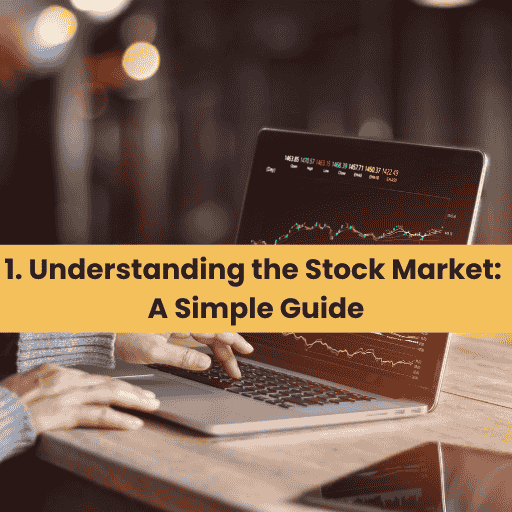Are you tired of feeling lost in the sea of financial charts and indicators? 🤔 Do you find yourself struggling to make sense of market trends and predict future price movements? If so, you’re not alone. Many traders and investors grapple with the complexities of technical analysis, often missing out on lucrative opportunities.
But what if there was a way to unlock the secrets of the markets and gain a significant edge over other traders? Enter Advanced Technical Analysis – a powerful toolkit that can transform your trading strategy and boost your profits. By mastering advanced indicators, complex chart patterns, and sophisticated trend analysis techniques, you can dive deeper into market dynamics and make more informed decisions. 💡📈
In this comprehensive guide, we’ll explore the world of Advanced Technical Analysis, covering everything from understanding intricate indicators to applying these techniques across different markets. Get ready to elevate your trading game as we delve into mastering chart patterns, implementing advanced trend analysis, exploring market psychology, and integrating technical analysis with other approaches. Let’s embark on this journey to become a more savvy and successful trader!
Understanding Advanced Technical Indicators
Advanced technical indicators are powerful tools that traders use to gain deeper insights into market trends and potential price movements. These indicators go beyond basic chart patterns and provide sophisticated analysis to inform trading decisions. Let’s explore four key advanced technical indicators that every serious trader should understand.
A. Moving Average Convergence Divergence (MACD)
The MACD is a versatile indicator that combines trend-following and momentum aspects. It consists of two moving averages and a histogram:
- Fast line (usually 12-period EMA)
- Slow line (usually 26-period EMA)
- MACD histogram (difference between fast and slow lines)
MACD helps traders identify:
- Trend direction and strength
- Potential buy/sell signals
- Overbought/oversold conditions
| MACD Signal | Interpretation |
|---|---|
| Fast line crosses above slow line | Bullish signal |
| Fast line crosses below slow line | Bearish signal |
| Histogram crosses zero line | Potential trend reversal |
B. Relative Strength Index (RSI)
The RSI is a momentum oscillator that measures the speed and change of price movements. It oscillates between 0 and 100, providing insights into overbought and oversold conditions:
- RSI above 70: Potentially overbought
- RSI below 30: Potentially oversold
Traders use RSI to:
- Identify potential reversals
- Confirm trends
- Spot divergences between price and RSI
C. Bollinger Bands
Bollinger Bands consist of three lines that provide a visual representation of price volatility:
- Middle band: 20-period simple moving average
- Upper band: Middle band + (2 * standard deviation)
- Lower band: Middle band – (2 * standard deviation)
Key uses of Bollinger Bands include:
- Identifying potential breakouts
- Gauging market volatility
- Spotting potential trend reversals
| Band Behavior | Potential Interpretation |
|---|---|
| Price touching upper band | Overbought condition |
| Price touching lower band | Oversold condition |
| Bands narrowing | Potential for a sharp move |
D. Fibonacci Retracement
Fibonacci retracement is based on the mathematical sequence discovered by Leonardo Fibonacci. It helps identify potential support and resistance levels. Key Fibonacci levels include:
- 23.6%
- 38.2%
- 50%
- 61.8%
Traders use Fibonacci retracements to:
- Identify potential entry points
- Set profit targets
- Place stop-loss orders
To apply Fibonacci retracement:
- Identify a significant price move
- Draw the retracement tool from the start to the end of the move
- Observe how price reacts to the Fibonacci levels
Understanding these advanced technical indicators can significantly enhance your trading strategy. By combining multiple indicators and interpreting their signals in context, traders can make more informed decisions. In the next section, we’ll delve into mastering chart patterns, which complement these indicators for a comprehensive technical analysis approach.

Mastering Chart Patterns
Chart patterns are essential tools in technical analysis, providing valuable insights into potential price movements. Let’s explore some of the most powerful and reliable chart patterns that every advanced trader should master.
A. Head and Shoulders
The Head and Shoulders pattern is a reliable reversal pattern that often signals the end of an uptrend. It consists of three peaks, with the middle peak (head) being higher than the two surrounding peaks (shoulders).
- Identification: Look for a left shoulder, a higher head, and a right shoulder
- Neckline: Draw a line connecting the lows between the shoulders
- Confirmation: Price breaks below the neckline
- Target: Measure the distance from the head to the neckline and project it downward
B. Double Tops and Bottoms
Double Tops and Bottoms are reversal patterns that indicate a potential change in trend direction.
| Pattern | Description | Signal |
|---|---|---|
| Double Top | Two peaks at approximately the same price level | Bearish reversal |
| Double Bottom | Two troughs at approximately the same price level | Bullish reversal |
Key Points:
- Look for a clear trend before the pattern forms
- Confirm the pattern with a break of the support/resistance level
- Volume often decreases as the second peak/trough forms
C. Triangle Patterns
Triangle patterns are continuation patterns that can provide insight into potential breakouts.
- Symmetrical Triangle: Converging trendlines with equal slopes
- Ascending Triangle: Flat upper trendline, rising lower trendline
- Descending Triangle: Flat lower trendline, falling upper trendline
Pro Tip: The breakout direction is often in the direction of the prevailing trend.
D. Cup and Handle
The Cup and Handle is a bullish continuation pattern resembling a teacup on a chart.
- Cup: A U-shaped bowl
- Handle: A slight downward drift
- Breakout: Occurs when price moves above the resistance level formed by the cup’s rim
- Target: Measure the depth of the cup and project it upward from the breakout point
E. Flag and Pennant
Flag and Pennant patterns are short-term continuation patterns that occur during strong trends.
Flag Pattern:
- Resembles a parallelogram or rectangle
- Slopes against the prevailing trend
Pennant Pattern:
- Similar to a symmetrical triangle
- Typically forms over a shorter period than a flag
Both patterns are preceded by a sharp price movement (the flagpole) and signal a continuation of the trend after a brief consolidation.
Now that we’ve covered these essential chart patterns, it’s crucial to practice identifying them in real-world scenarios. Remember, no pattern is foolproof, and it’s always wise to use these in conjunction with other technical analysis tools. In the next section, we’ll delve into implementing advanced trend analysis techniques to further enhance your trading strategy.

Implementing Advanced Trend Analysis
Now that we’ve covered chart patterns, let’s dive into advanced trend analysis techniques that can take your trading to the next level. These methods will help you gain a deeper understanding of market trends and make more informed trading decisions.
Multiple Timeframe Analysis
Multiple Timeframe Analysis (MTA) is a powerful technique that involves examining trends across different time frames to get a comprehensive view of market dynamics. By analyzing multiple timeframes, traders can:
- Identify the primary trend
- Spot potential entry and exit points
- Reduce false signals
Here’s a breakdown of how to approach MTA:
| Timeframe | Purpose |
|---|---|
| Long-term | Identify overall trend direction |
| Medium-term | Confirm trend and spot potential reversals |
| Short-term | Fine-tune entry and exit points |
To implement MTA effectively, start with the longest timeframe and work your way down to shorter intervals. This top-down approach helps maintain perspective and align your trades with the broader market trend.
Trend Line Techniques
Trend lines are simple yet powerful tools for identifying and confirming trends. Advanced trend line techniques include:
- Multiple trend lines
- Channel trading
- Trend line breaks
When drawing trend lines, consider these best practices:
- Connect at least two significant highs or lows
- Use logarithmic charts for long-term analysis
- Be prepared to adjust trend lines as new data emerges
Momentum Indicators
Momentum indicators help traders gauge the strength of a trend and identify potential reversals. Some popular momentum indicators include:
- Relative Strength Index (RSI)
- Moving Average Convergence Divergence (MACD)
- Stochastic Oscillator
These indicators can be particularly useful when combined with trend analysis. For example, a strong uptrend coupled with a bullish MACD crossover can provide a high-probability trading opportunity.
Volume Profile Analysis
Volume Profile Analysis is an advanced technique that examines the relationship between price and volume. This method helps traders:
- Identify key support and resistance levels
- Spot potential breakout areas
- Understand market structure
To implement Volume Profile Analysis:
- Use a Volume Profile indicator on your chart
- Look for high-volume nodes (areas of significant trading activity)
- Identify the Point of Control (POC) – the price level with the highest trading volume
- Use this information to complement your trend analysis
By integrating these advanced trend analysis techniques into your trading strategy, you’ll be better equipped to navigate complex market conditions and identify high-probability trading opportunities. In the next section, we’ll explore the crucial role of market psychology in technical analysis and how it can further enhance your trading decisions.

Exploring Market Psychology
Now that we’ve covered advanced trend analysis techniques, let’s delve into the fascinating world of market psychology. Understanding the psychological factors that drive market participants’ decisions is crucial for successful trading and investing.
A. Elliott Wave Theory
Elliott Wave Theory is a powerful tool for analyzing market psychology and predicting price movements. Developed by Ralph Nelson Elliott in the 1930s, this theory suggests that market prices move in repeating patterns driven by investor psychology.
The theory is based on the following key principles:
- Markets move in five-wave patterns in the direction of the main trend, followed by three-wave corrective patterns.
- These patterns are fractal, meaning they occur at multiple time scales.
- The patterns reflect the collective psychology of market participants.
| Wave | Description | Psychology |
|---|---|---|
| 1 | Initial move up | Cautious optimism |
| 2 | Pullback | Doubt and skepticism |
| 3 | Strongest and longest | Widespread optimism |
| 4 | Correction | Uncertainty |
| 5 | Final push | Euphoria |
B. Sentiment Indicators
Sentiment indicators help traders gauge the overall mood of the market. These tools provide insights into whether investors are bullish, bearish, or neutral about an asset or the market as a whole.
Some popular sentiment indicators include:
- VIX (Volatility Index): Often called the “fear index,” it measures expected market volatility.
- Put/Call Ratio: Compares the volume of put options to call options, indicating bearish or bullish sentiment.
- Investor Intelligence Survey: Surveys professional investors and analysts to determine market sentiment.
C. Market Breadth Analysis
Market breadth analysis examines the number of stocks participating in a market move, providing insights into the overall health of the market. This approach helps traders identify potential trend reversals and confirm the strength of existing trends.
Key market breadth indicators include:
- Advance-Decline Line (ADL): Measures the cumulative difference between advancing and declining stocks.
- New Highs-New Lows: Compares the number of stocks reaching new 52-week highs to those hitting new lows.
- McClellan Oscillator: A momentum indicator based on the difference between advancing and declining stocks.
| Indicator | Bullish Signal | Bearish Signal |
|---|---|---|
| ADL | Rising with price | Diverging from price |
| New Highs-New Lows | More new highs | More new lows |
| McClellan Oscillator | Above zero, rising | Below zero, falling |
By incorporating these psychological aspects into your technical analysis, you can gain a deeper understanding of market dynamics and make more informed trading decisions. Next, we’ll explore how to integrate technical analysis with other approaches to create a comprehensive trading strategy.

Integrating Technical Analysis with Other Approaches
Now that we’ve explored various aspects of advanced technical analysis, let’s delve into how it can be integrated with other approaches to enhance your trading strategy.
Fundamental Analysis Synergy
Combining technical analysis with fundamental analysis can provide a more comprehensive view of the market. While technical analysis focuses on price movements and patterns, fundamental analysis examines economic factors, company financials, and industry trends.
Here’s a table comparing the two approaches:
| Technical Analysis | Fundamental Analysis |
|---|---|
| Short-term focus | Long-term focus |
| Price patterns | Economic indicators |
| Chart analysis | Financial statements |
| Market sentiment | Company valuation |
By integrating both approaches, traders can:
- Confirm trading signals
- Identify potential entry and exit points
- Assess the overall market environment
Algorithmic Trading Strategies
Advanced technical analysis can be incorporated into algorithmic trading strategies to automate decision-making processes. These strategies use complex mathematical models and computer algorithms to execute trades based on predefined criteria.
Key benefits of integrating technical analysis with algorithmic trading include:
- Rapid execution of trades
- Elimination of emotional bias
- Backtesting capabilities
- Consistent application of trading rules
Risk Management Techniques
Effective risk management is crucial for successful trading. Advanced technical analysis can be integrated with various risk management techniques to optimize trading outcomes:
- Position sizing: Use technical indicators to determine appropriate trade sizes
- Stop-loss orders: Set stop-loss levels based on support and resistance levels
- Risk-reward ratios: Calculate potential profits and losses using technical analysis
- Diversification: Spread risk across different assets based on technical correlations
Backtesting and Optimization
Integrating technical analysis with backtesting and optimization processes allows traders to refine their strategies and improve performance. This involves:
- Historical data analysis: Test trading strategies using past market data
- Parameter optimization: Fine-tune technical indicators for optimal performance
- Performance evaluation: Assess strategy effectiveness using various metrics
- Continuous improvement: Regularly update and refine strategies based on results
By combining advanced technical analysis with these approaches, traders can develop more robust and effective trading strategies. This integration allows for a more comprehensive understanding of market dynamics and helps in making informed trading decisions.
Next, we’ll explore how to apply advanced technical analysis across different markets, considering the unique characteristics of each.

Applying Advanced Technical Analysis in Different Markets
Now that we’ve explored various advanced technical analysis techniques, let’s examine how to apply these strategies across different financial markets. Each market has its unique characteristics, requiring traders to adapt their technical analysis approach accordingly.
A. Forex Market Strategies
In the foreign exchange market, technical analysis plays a crucial role due to its high liquidity and 24-hour trading cycle. When applying advanced technical analysis to forex:
- Focus on key currency pairs (e.g., EUR/USD, GBP/USD, USD/JPY)
- Utilize multiple timeframe analysis to identify trends across different periods
- Pay attention to economic calendars and news events that can impact currency movements
Key Forex Technical Indicators:
| Indicator | Purpose |
|---|---|
| Relative Strength Index (RSI) | Measure overbought/oversold conditions |
| Moving Average Convergence Divergence (MACD) | Identify trend direction and momentum |
| Fibonacci Retracements | Determine potential support and resistance levels |
B. Currency analysis Techniques
The cryptocurrency market’s high volatility and 24/7 trading environment require a unique approach to technical analysis:
- Use longer-term moving averages to filter out noise in volatile markets
- Implement volume analysis to confirm trend strength and potential reversals
- Consider on-chain metrics for additional insights into network activity and adoption
C. Options and Futures Trading Approaches
When applying technical analysis to derivatives markets:
- Analyze the underlying asset’s price action in conjunction with the derivative
- Incorporate volatility indicators like the VIX for options trading
- Use volume profile analysis to identify key price levels in futures contracts
D. Commodity Market Analysis
Technical analysis in commodity markets often involves:
- Seasonal patterns analysis, especially for agricultural commodities
- Long-term trend identification using monthly and weekly charts
- Monitoring of global supply and demand factors alongside technical indicators
E. Bond Market Technical Indicators
While fundamental factors heavily influence bond markets, technical analysis can still provide valuable insights:
- Use yield curve analysis to gauge market sentiment and economic outlook
- Implement momentum indicators to identify potential trend changes in bond prices
- Analyze correlations between bond yields and other asset classes for a comprehensive view
When applying advanced technical analysis across these diverse markets, it’s crucial to adapt your strategies to each market’s unique characteristics. Consider factors such as liquidity, volatility, and market participants to fine-tune your approach. Remember that while technical analysis principles remain consistent, their application may vary significantly depending on the specific market you’re trading.
By mastering these market-specific techniques, you’ll be better equipped to navigate the complexities of each financial market and make more informed trading decisions. As you continue to refine your skills, you’ll discover that advanced technical analysis is a powerful tool for identifying opportunities across a wide range of financial instruments.

Technical analysis is a powerful tool for traders and investors seeking to enhance their market understanding and decision-making processes. By delving into advanced indicators, mastering complex chart patterns, and implementing sophisticated trend analysis techniques, traders can gain valuable insights into market dynamics. Furthermore, understanding market psychology and integrating technical analysis with other approaches, such as fundamental analysis, can provide a more comprehensive view of potential market movements.
As you apply these advanced technical analysis techniques across various markets, remember that continuous learning and adaptation are crucial. Stay updated on new developments in the field, practice regularly, and refine your strategies based on real-world results. By honing your skills in advanced technical analysis, you’ll be better equipped to navigate the complexities of financial markets and make more informed trading decisions.


